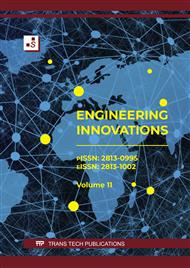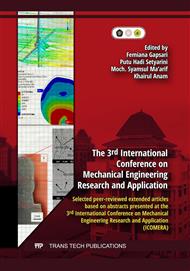p.1
p.9
p.19
p.29
p.43
p.63
p.69
p.75
p.83
Simulation of Stress Intensity Factor and J-Integral on UIC 54 Railway Failure Using A Fracture Mechanics Approach
Abstract:
Repeated loading on the railroad tracks will result in fatigue failure. Fatigue failure combined with a defect in the form of a crack in the railroad track will result in a decrease in strength. Defects in the form of cracks are formed due to improper manufacturing and treatment processes. One treatment that can cause the formation of defects in the form of cracks is thermite welding. Improper and non-standard thermite welding techniques can trigger the formation of defects in the form of cracks in the railroad joints. Based on these problems, this simulation aims to obtain information about the value of maximum stress, SIF, J-Intergal, number of cycles, and crack extension from variations in crack size to repeated loading. The method consists of preprocessing, processing and postprocessing. Preprocessing begins with the design of the UIC 54 railroad crack which consists of 3 variations of crack length, namely 10 mm, 15 mm, and 20 mm. The design was tested through static structural simulation using the ANSYS 2021 R2 application. Meshing is configured using an element size of 5 mm and uses curvature capture. The results of the simulation obtained maximum stress values, SIF, J-Integral, number of cycles, and crack extension. Based on the simulation of SIF 1 and J-Integral values on the specimen design with a crack length of 10 mm it shows 362.03 Mpa.mm1/2 of 0.5708 mJ/mm2, for an initial crack length of 15 mm that is equal to 482.81 Mpa.mm1/2 and 0.91738 mJ/mm2, and for an initial crack length of 20 mm, it is 600.54 Mpa.mm1/2 and 1.4465 mJ/mm2. The results show that the increase in SIF 1 and J-Integral will be proportional to the increase in the initial crack length value. .
Info:
Periodical:
Pages:
1-8
Citation:
Online since:
June 2024
Authors:
Permissions:
Share:
Citation:



